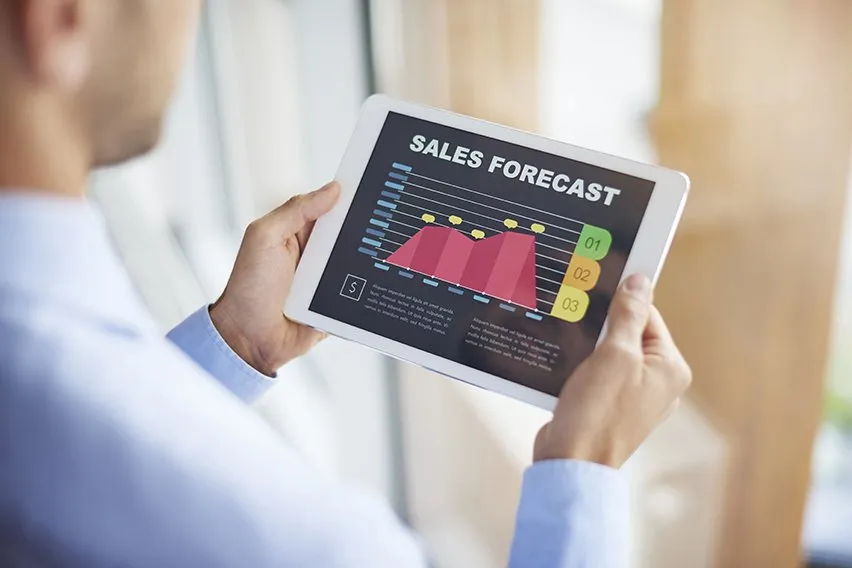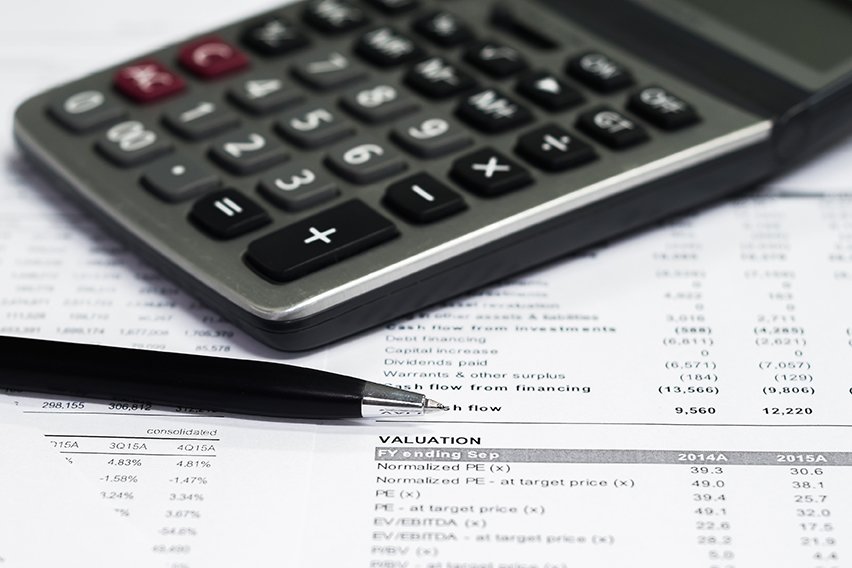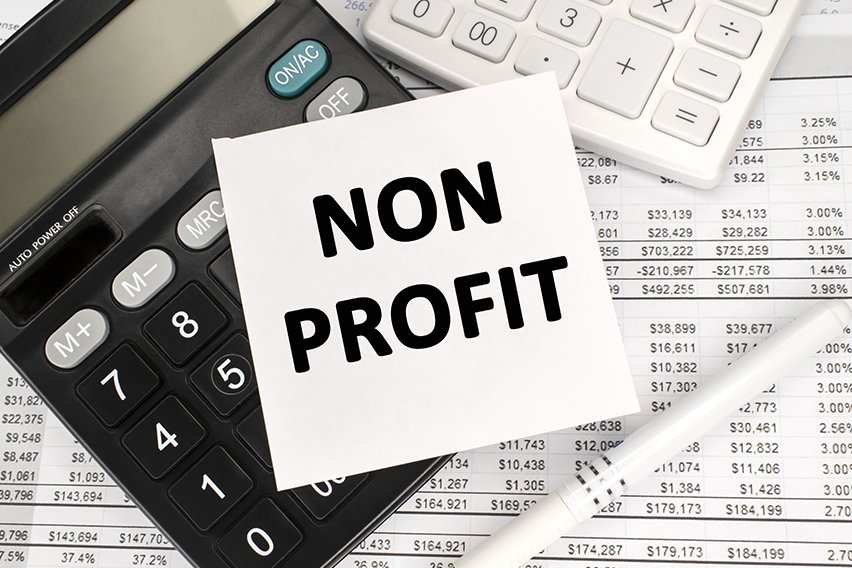Accounting Forecasting Techniques and Tips for Small Businesses

There are two techniques used in accounting forecasting: qualitative and quantitative. Qualitative forecasting is based on information that can’t be measured. It’s especially important when a company’s just starting out, since there’s a lack of past (historical) data. Quantitative forecasting relies on historical data that can be measured and manipulated. It is best for making short-term forecasts as past trends are more likely to reoccur in the near future than in the long term.
Read on to learn more about these techniques, which ones are best suited to your business and how they’ll help your business adapt to potential problems down the road.
- What Is Forecasting in Accounting?
- What Are the Techniques Used in Forecasting?
- What Is Qualitative Forecasting?
- What Is Quantitative Forecasting?
- What Is the Difference Between a Projection and a Forecast?
What Is Forecasting in Accounting?
Forecasting is an accounting technique that uses data to make estimates about future trends. It’s essential for any business, whether you’re starting out and writing a business plan or you’re an established corporation.
Business owners need to consider forecasts as part of most decision-making processes. Forecasts are commonly used to draw up budgets or to plan for expenses by estimating future demand for products or services.
In fact, forecasting is necessary to cope with all kinds of potential issues from variations in demand to seasonal shifts to changes in the economy, according to the Harvard Business Review. That said, it’s important to know both what forecasting can and can’t do and what techniques best suit your business at this point in time.

What Are the Techniques Used in Forecasting?
There are two types of forecasting methods: qualitative and quantitative. Each type has different uses so it’s important to pick the one that that will help you meet your goals. And understanding all the techniques available will help you select the one that will yield the most useful data for your company.
Choosing a forecasting method depends on the following factors:
- Context
- Historical data: if it’s available and/or relevant
- Accuracy desired
- Time period: short term vs. long term forecast
- Cost of forecasting vs. benefit
- Time available: do you need the forecast immediately?
Most importantly, ask yourself: what’s the purpose of this forecast? If you’re writing a business plan, you may only need a gross estimate of the size of the market. Advanced and precise forecasting techniques would be unnecessary. If you’re making a financial forecast to draw up a budget, though, you’ll need much more detailed and accurate data.
The golden rule is to choose the technique that best analyzes the data available.
If one forecasting method works for you and data is acceptably accurate, don’t try a more advanced technique. Sure, you might get even more accurate data, but the information required to run the advanced forecast may be way too expensive to get—or the information might not be available at all.
What Is Qualitative Forecasting?
Qualitative forecasting is based on information that can’t be measured. It’s especially important when a company’s just starting out, since there’s a lack of historical data. Past data may be incorporated in qualitative forecasting, or it may not. Human judgement is key and the challenge is to process this judgement in an unbiased, logical way that results in quantitative estimates.
This forecasting technique is best for long-term forecasts, to forecast new business ventures and forecasts of margins.
Qualitative methods include:
The Delphi Method
If you’re looking for a long-term forecast and don’t mind investing the time and energy, this method delivers. That said, more informal approaches are possible.
This structured approach brings together experts to answer a series of questionnaires, with results from the previous questionnaire determining the content for the next one. A facilitator is involved at each stage.
- For example, a freelance calligrapher wants feedback on branding. She probably won’t have the resources to hire a panel of experts. However, she could post on a LinkedIn group for creatives and ask solicit feedback about her logo, website etc.
To get the best quality feedback, look for online forums that require a professional credential to join and have effective administrators who keep the discussions constructive and focused. Check the credentials and work experience of anyone offering advice.
In-House Expertise
The staff member(s) with the most expertise on what’s being forecasted take on the task. They use their in-depth knowledge to make predictions.
- For example, the sales department is tasked with making a sales forecast thanks to their intimate knowledge of their customers. In a small business, the owner will likely need to step in.
Market Research
This is another forecasting method that requires significant time, energy and resources. Information is collected via conversations with present and potential customers about their needs for certain services or goods. Questionnaires, surveys and analysis of variables are all required to produce accurate data. This information then needs to be analyzed while taking into account limitations like the small data set.
This method produces very accurate data for the short (less than three months) to medium term (three months to two years) as it identifies changing customer opinions.
Thankfully, small businesses don’t need to run multiple focus groups or get thousands of people to fill out their survey to effectively do market research.
- For example, a personal trainer may want a better idea of what people look for in a trainer. There are plenty of websites to mine public opinion such as Quora, Reddit and Facebook groups. For example, a trainer could jump on Reddit and analyze any number of subreddits like /r/fitness, /r/bodybuilding or /r/running to get niche (and often candid) information or post questions himself. Once he’s familiar with the group, he can even post a link to a custom survey.

What Is Quantitative Forecasting?
Quantitative forecasting relies on data that can be measured and manipulated. The data is usually from the past. Quantitative (or statistical) forecasting should use data on past sales or performance to evaluate if sales are currently increasing or decreasing or the business is flourishing or stagnating—and exactly how quickly this is happening.
This type of analysis is best for short-term forecasting as making assumptions about the future based on past performance is much more likely to be accurate in the near future.
There are two types of quantitative forecasting:
Time Series Analysis
Time series analysis requires a few years of data on either a specific product or product line in order to get a clear sense of patterns. These types of patterns indicate that they’ll keep happening into the future, or at least this is the assumption.
This method either copies forward the past data into the future without changing it or projects an average of past results. It’s possible to get even more specific with the analysis by separating out trend, cyclical and seasonal components and then forecasting each of them.
- For example, if a plumber wants to forecast profit for April, she could use a three-month moving average. If January, February, and March’s profits were $1000, $2000, and $3000 respectively, she’d add the three months’ profit up ($6000) and divide by three = $2000 profit forecast for April.
- The plumber could also use a weighted average, giving more weight to profit from more recent months, with the decimal points equalling one: $1000(.2), $2000(.3), and $3000(.5) = $2300 profit forecast for April.
Causal Methods
These methods take into account other factors which affect your business. This more advanced technique can work farther into the future than time series analysis. It relies on having a large data set—a time series analysis plus market research.
There are a variety of causal methods but regression analysis is the primary method used to analyze cause-and-effect patterns. Regression analysis relates sales to other variables such as competition and the economy.
- For example, a gardening business may want to look at predicted weather patterns over an upcoming season to determine whether their business will be affected positively or negatively.
Regression analysis can be performed using tools such as Excel or business owners may want to invest in more sophisticated statistics software or even hire an expert to perform this task.
What Is the Difference Between a Projection and a Forecast?
The difference between a projection and a forecast is the type of assumption involved. A projection makes certain assumptions and predicts an outcome based on those assumptions. A forecast is based on historical data with the expectation this data will cause certain future events to occur.
A projection won’t tell you if something will happen, it will only tell you what will happen if certain hypothetical assumptions turn out to be true. Forecasts tell businesses what will actually happen.
- For example, a business wants to make a budget for costs. Payroll can be budgeted according to a projection (scenario: we decide to lay off two employees) or a financial forecast (payroll cost $10,000 on average over the last three quarters, so it will cost the same next quarter).
RELATED ARTICLES

 What Is Work Order Accounting? Why It’s Important to Your Business.
What Is Work Order Accounting? Why It’s Important to Your Business. How to Calculate Equity Income in 4 Easy Steps
How to Calculate Equity Income in 4 Easy Steps How to Create a Single-Step Income Statement and Simplify Your Small Business Accounting
How to Create a Single-Step Income Statement and Simplify Your Small Business Accounting Should I Hire An Accountant For My Small Business?
Should I Hire An Accountant For My Small Business? How to Categorize Expenses: 14 Small Business Expense Categories to Consider
How to Categorize Expenses: 14 Small Business Expense Categories to Consider Nonprofit Accounting: Basics and Best Practices Guide
Nonprofit Accounting: Basics and Best Practices Guide